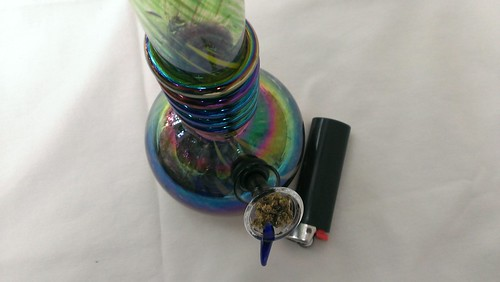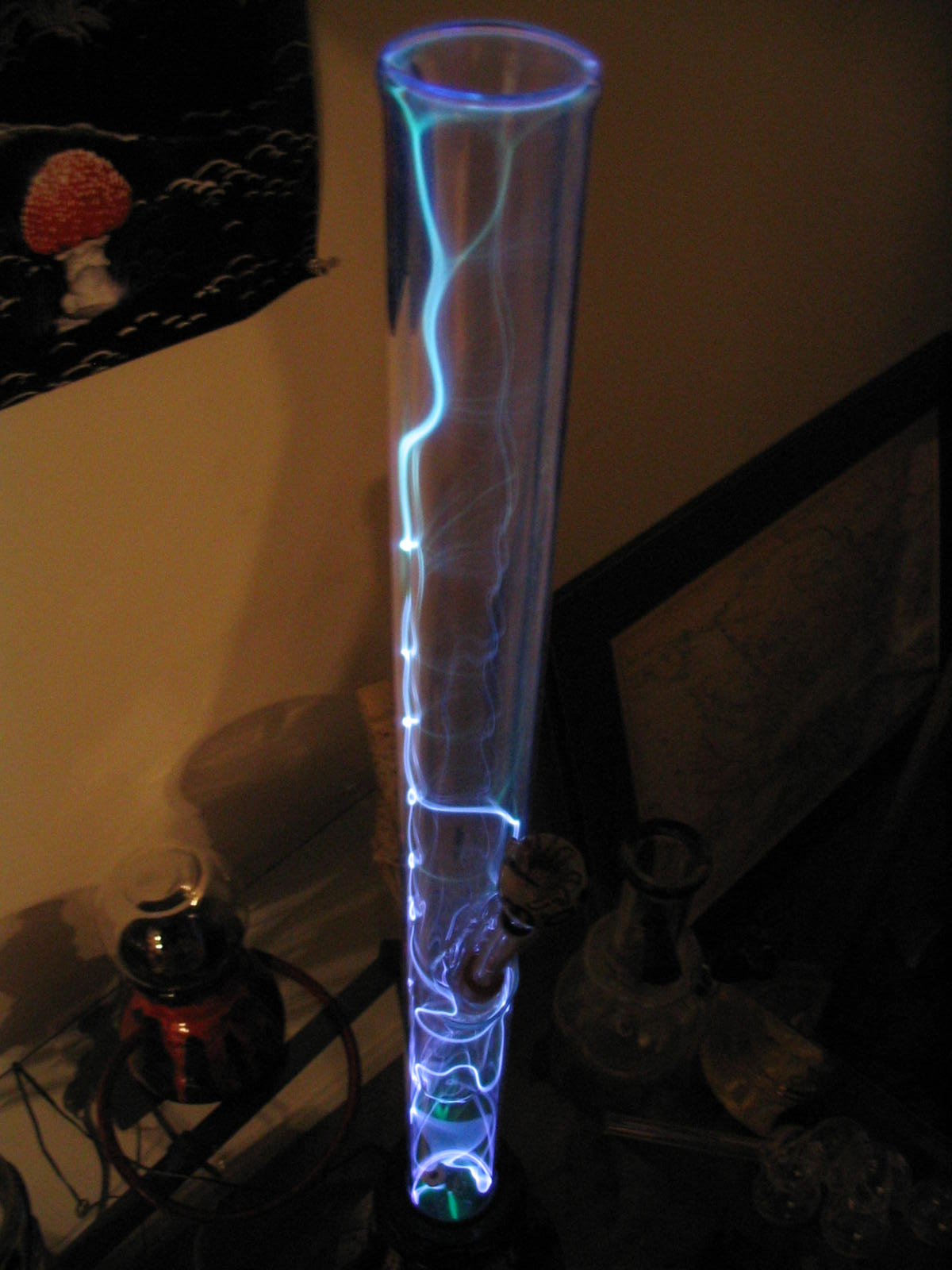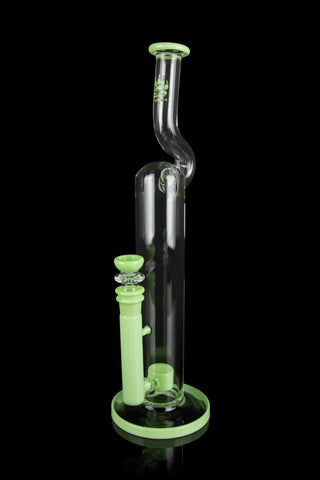A bong is a device that uses water to filter and cool the smoke from burning herb or tobacco. Bongs are one of the most common forms of consuming dried flower, especially among cannabis enthusiasts. They come in various shapes, sizes, and designs, but they all share the same basic principle: creating a smooth and clean-tasting experience for the user.
But how does a bong work exactly? What are the different parts of a bong and what do they do? And what are the benefits and risks of using a bong? In this blog post, we will answer these questions and more, so you can understand the science and art behind this popular smoking device.
The History of Bongs
The word “bong” is said to have been derived from the Thai word “baung,” which traditionally refers to a round wooden tube of bamboo and has also taken on the modern definition of a cylindrical smoking pipe. Some have traced the use of a water pipe to filter and cool smoke back to China’s Ming Dynasty. Other reports show a history of use in Africa, where tribes would build earthen bongs into the ground using the same principles behind modern bongs. There are even accounts of ancient bongs made of pure gold being used by a nomadic warrior race in what’s now Russia.
Bongs are also closely related to the hookah, a type of water pipe generally used to smoke flavored tobacco. Hookahs use a hose as a mouthpiece and can be designed to allow multiple people to enjoy the smoke from a single bowl.
Today bongs can take on many shapes and sizes, but the most common versions are hand-blown from glass by artists who blend science and art, creating masterpieces that are both beautiful and functional. This wasn’t always the case, though. Throughout its evolution, the bong has also been made from materials including hand-carved wood, bamboo, ceramics, and even plastic. Many appreciate the MacGyver-like ability to fashion just about anything into a bong, from Coke bottles to watermelons and everything in between.
Anatomy of the Different Bong Parts
The anatomy of a standard bong can be broken down into five basic parts:
- Bowl: The bowl is the bulbous attachment where dried herb or tobacco is loaded and combusted. It’s often removable, allowing it to function as pull- or slide-carburetor.
- Carb: The carb, short for carburetor, is a small hole that allows the user to clear smoke from the entire chamber of the bong, completing the bong toke. The most common type of carb found on glass bongs is a pull- or slide-carb, which is exposed when the bowl is removed.
- Downstem: The downstem is the small tube that allows the smoke to travel from the bowl down to the base, where it then percolates through water.
- Base: The base is the bottom of a bong and can take many shapes, depending on style. A bubble- or beaker-shaped base is often used to create the water chamber in which the smoke cools as it passes through the water.
- Tube: The tube is the main part of the bong that ends with the mouthpiece. It can be straight or curved, and sometimes features an ice pinch or catcher that allows the user to add ice cubes to further cool down the smoke.
How Does a Bong Work?
The process of using a bong is fairly simple:
- Fill the base with enough water to submerge the downstem.
- Pack your herb or tobacco into the bowl.
- Place your mouth over the mouthpiece and light up your material with a lighter or hemp wick.
- Inhale slowly and steadily while keeping an eye on the chamber. You should see smoke filling up inside.
- When you’re ready to inhale all the smoke, remove the bowl (if it has a carb) or cover/uncover the carb hole (if it doesn’t have one) with your finger or thumb.
- Inhale deeply and hold it for a few seconds before exhaling.
As you inhale, a vacuum-like effect is created that sucks the smoke into the chamber. The smoke then bubbles and diffuses through the water, which removes some of the contaminants and makes the smoke smoother. The water also cools down the temperature of the smoke, which can otherwise be harsh on your throat and lungs.
What Are the Benefits and Risks of Using a Bong?
Using a bong has some advantages and disadvantages compared to other smoking methods, such as joints, pipes, or vaporizers. Here are some of them:
Benefits
- A bong can produce a smoother and creamier smoke than a joint or a pipe, which can be more pleasant to inhale.
- A bong can filter out some of the tar and ash that would otherwise end up in your lungs, reducing the amount of toxins you inhale.
- A bong can conserve your herb or tobacco by burning it more efficiently and producing more potent smoke.
- A bong can enhance the flavor and aroma of your herb or tobacco by preserving the terpenes and other compounds that are responsible for the taste and smell.
- A bong can offer a more social and ritualistic experience than other smoking methods, as you can share it with friends and enjoy the process of preparing and using it.
Risks
- A bong can still harm your lung health regardless of the water filtration, as you’re still inhaling smoke that contains carcinogens and other harmful substances.
- A bong can make you overdo it by delivering a large amount of smoke in one hit, which can cause coughing, dizziness, nausea, or paranoia.
- A bong can be hard to clean and maintain, especially if it has complex parts or intricate designs. Dirty bongs can harbor bacteria, mold, and residue that can affect the quality and safety of your smoke.
- A bong can be expensive and fragile, depending on the material and craftsmanship. Glass bongs are especially prone to breaking if dropped or mishandled.
- A bong can be illegal or frowned upon in some places, as it is often associated with cannabis use. You may face legal or social consequences if you use a bong in public or in areas where cannabis is prohibited.
Conclusion
A bong is a water pipe that works by filtering and cooling the smoke from burning herb or tobacco. It has a long history of use across different cultures and regions, and it has evolved into various forms and styles over time. A bong can offer a smoother and more flavorful smoke than other methods, but it also comes with some risks and challenges. Whether you’re a novice or a veteran smoker, knowing how a bong works can help you make informed decisions about your smoking preferences and habits.





